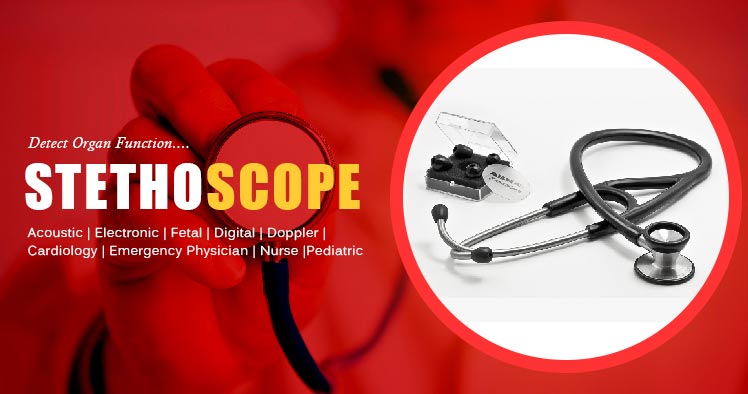The importance of a stethoscope cannot be condoned. Think of a doctor and what immediately comes to your mind is a stethoscope hanging around his neck. According to a 2012 research among several icons of health care, the stethoscope had the highest positive impact on the perceived trustworthiness of the practitioner.
Stethoscope is the first diagnostic tool used by doctors in most of the cases. It is used to listen to the various sounds that are produced within our body (auscultation). It is used to detect any kind of abnormal organ function. It is basically used to detect congestion in lungs and heart beats. However, less known to common man it is also used to listen to intestinal tract, flow of blood in the peripheral blood vessels, and heart beat of a developing fetus in pregnant women. In combination with shygmomanometer it is used to measure blood pressure.
More About Stethoscope
All stethoscope have a Y-shaped rubber tubing which allows the sound of the organ to enter through one end and travel to the other i.e to the ear piece.
“Diaphragm“, it is the larger, flatter part of the chest piece. “Bell“, is the smaller, concave part with a hole in it. The diaphragm is a sealed membrane that vibrates like our ear drum does, thus moves the air in and out of your ear canal, and viola enabling you to hear the sounds. Medical practitioner can reverse and use any side of the chest piece depending upon whether they need to hear low frequency sounds like heart murmurs or some bowel sounds or high frequency sounds like normal heart beats or breath sounds. However you may also find efficient tunable diaphragm @ healthgenie.in.
Types Of Stethoscope You Must Know:
Stethoscopes are of various types and models depending upon the different purposes it has to serve.
- Acoustic: The most popular and this is the first stethoscope model. It has the typical chest piece comprising of a diaphragm and a bell.
- Electronic: This uses electronic transducers to convert sound of the various body organ into electronic signals which can be then amplified. As it is inconvenient to use it is used only for remote diagnosis and monitoring.
- Fetal: It looks like trumpet and is placed on the bellies of the pregnant mothers in order to monitor the baby inside the mothers womb.
- Digital Stethoscope: It is a very convenient, easy to use, portable electronic auscultation device. It serves as a platform for potential computer aided diagnosis applications for the detection of heart murmurs.
- Doppler Stethoscope: It is an electronic device that measures the Doppler effect of ultrasound waves reflected by the organs. Motion is detected by the change in frequency.
Further stethoscopes are defined better depending upon the nature of diagnosis it is used for such as;
- Cardiology Stethoscope: It provides you with the finest, most discriminating acoustics. It provides extremely fine isolation of heart sounds and enables one to hear heart murmurs or irregular heart beats. It helps doctors to detect early signs of any heart ailment. It is a life saving device which is unlike bulky expensive machines found in hospitals.
- Emergency Physician Stethoscope: It has ambient noise reduction technology to help you hear heart and lungs sounds clearly.
- Nurse Stethoscope: It features ambient noise reduction technology and a smaller sound sensor that prepares you to serve a patient population varying in age.
- Pediatric Stethoscope: It features small diaphragm and a double-sided chest piece ideal for pediatric practice.
Qualities You Must Look For In A Good Stethoscope
- Chest piece should be made from stainless steel, steel can be machined to precise tolerances.This allows the diaphragm to fit with an air tight seal.The smallest air leak can degrade the performance.
- The diaphragm should be made of highly flexible, good quality material.
- The tube must be made from thick material, ideally with large internal double bore. This enhances sound transmission and isolates external noise.
- Ear piece should be angled and soft. Ear tip must fit smugly into the ear canal as rigid non-angled ear piece allows air leak and also painful to the ears.
Maintenance & Aftercare
As these stethoscopes are sometimes used directly on the skin, their proper cleaning and care is very important in order to keep it germ and infection free. It is a sensitive instrument and must be handled with care.
